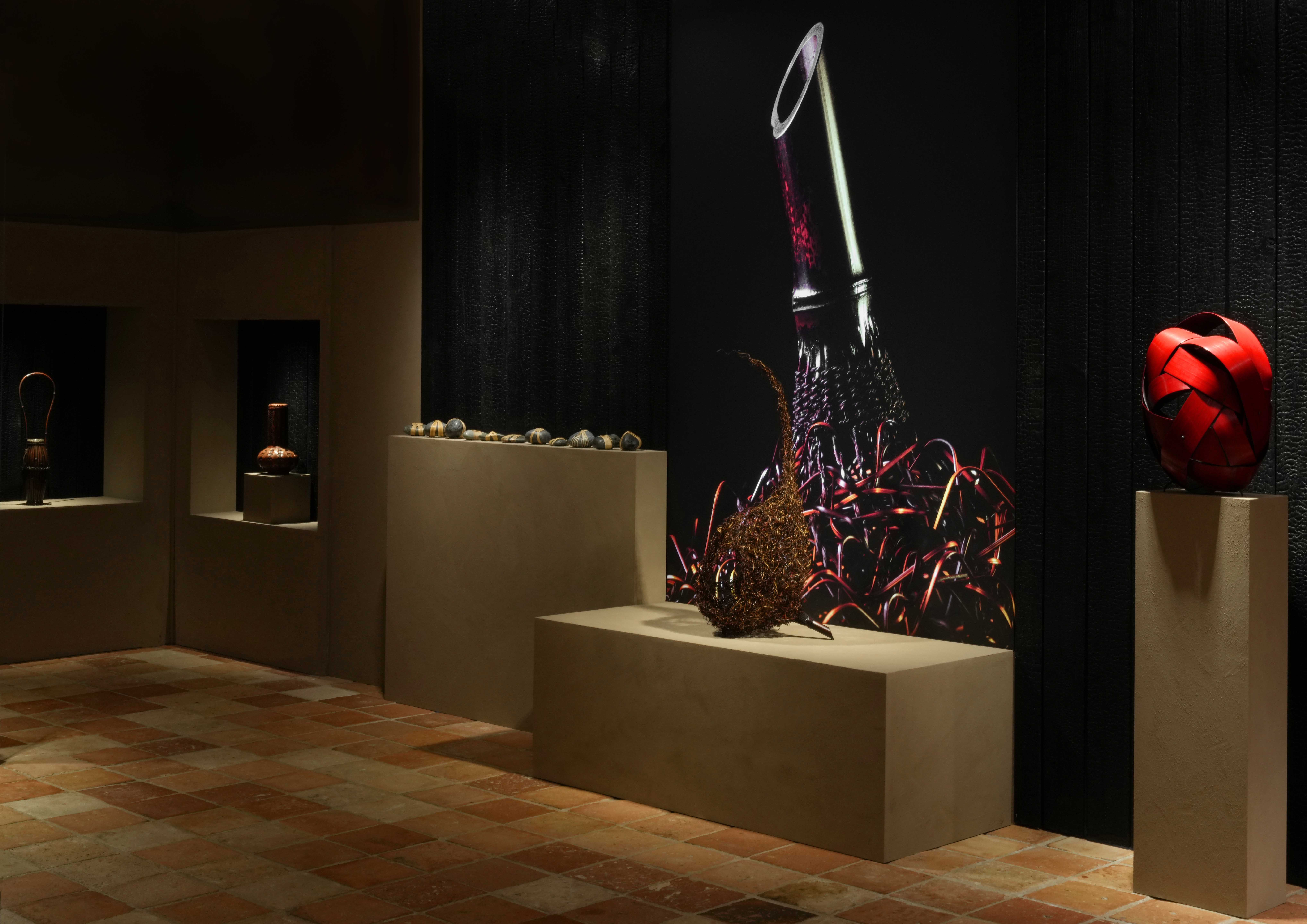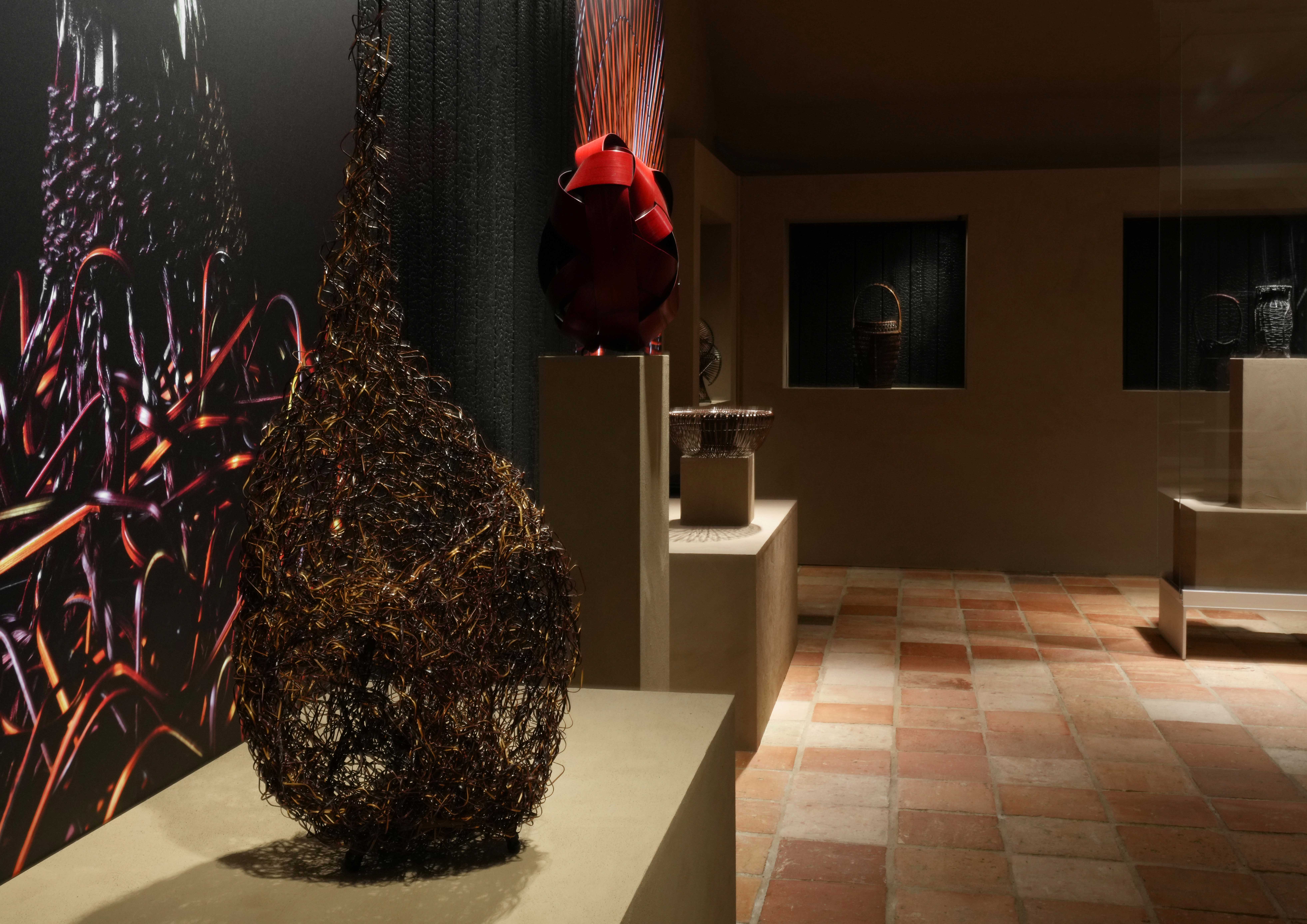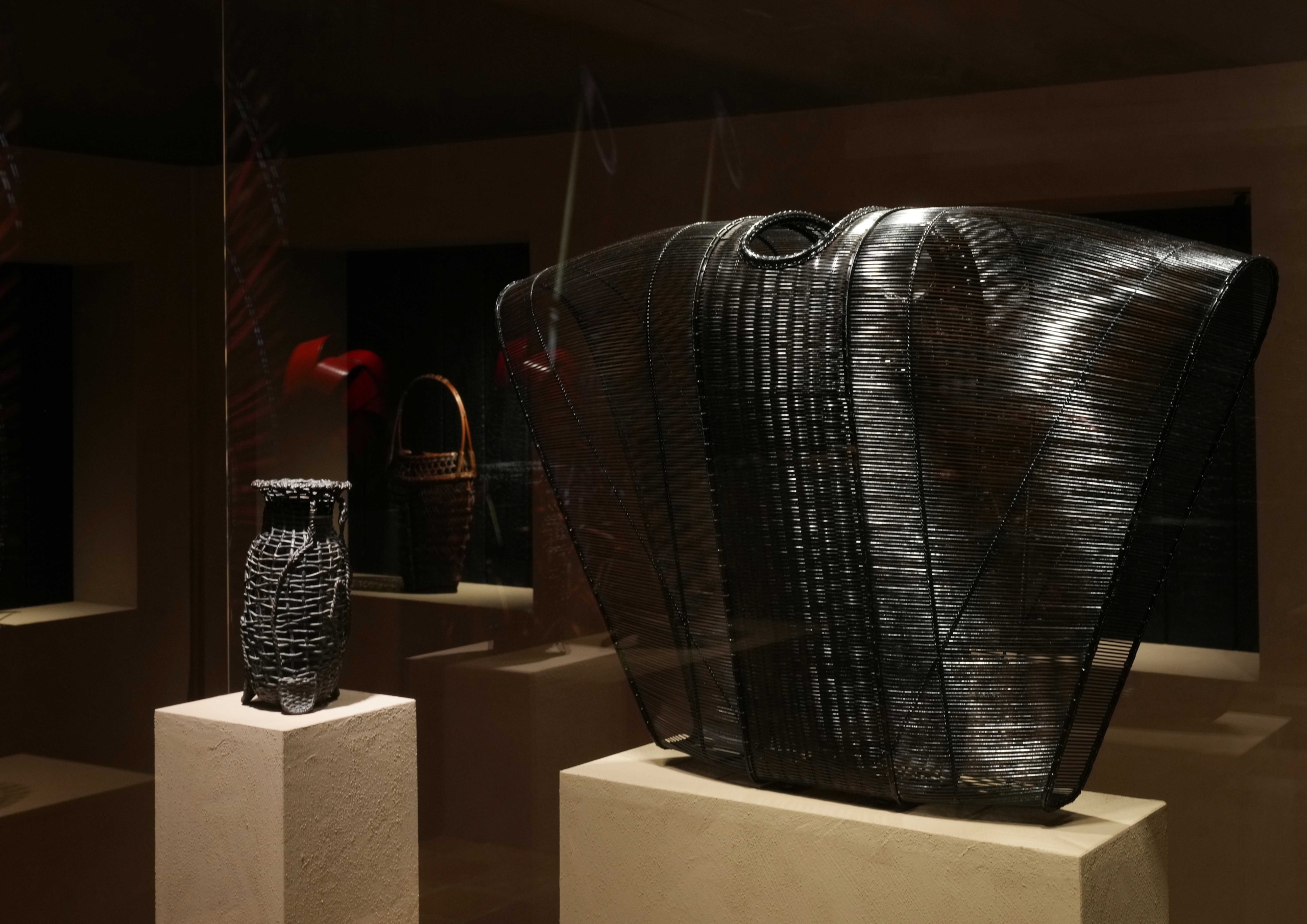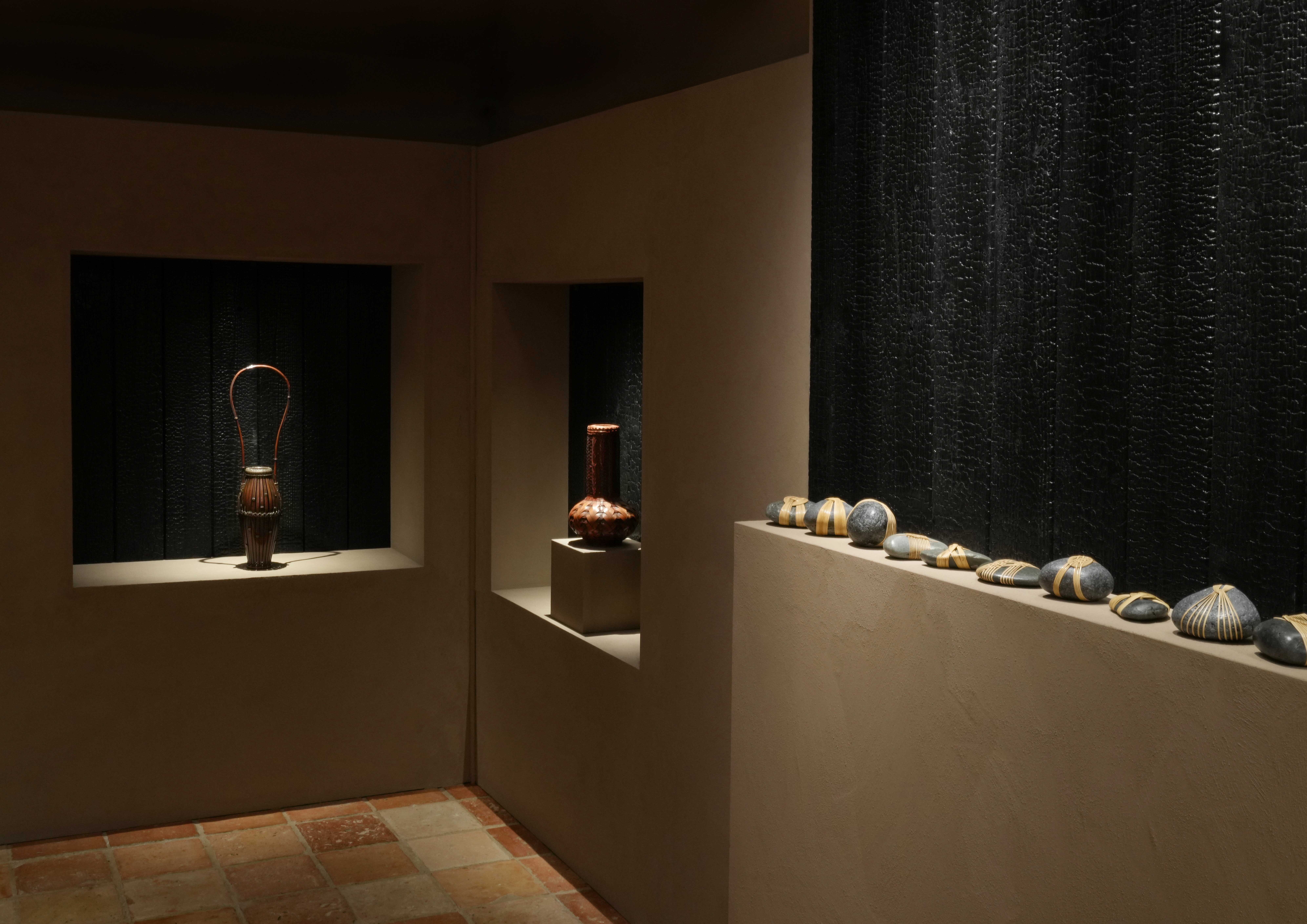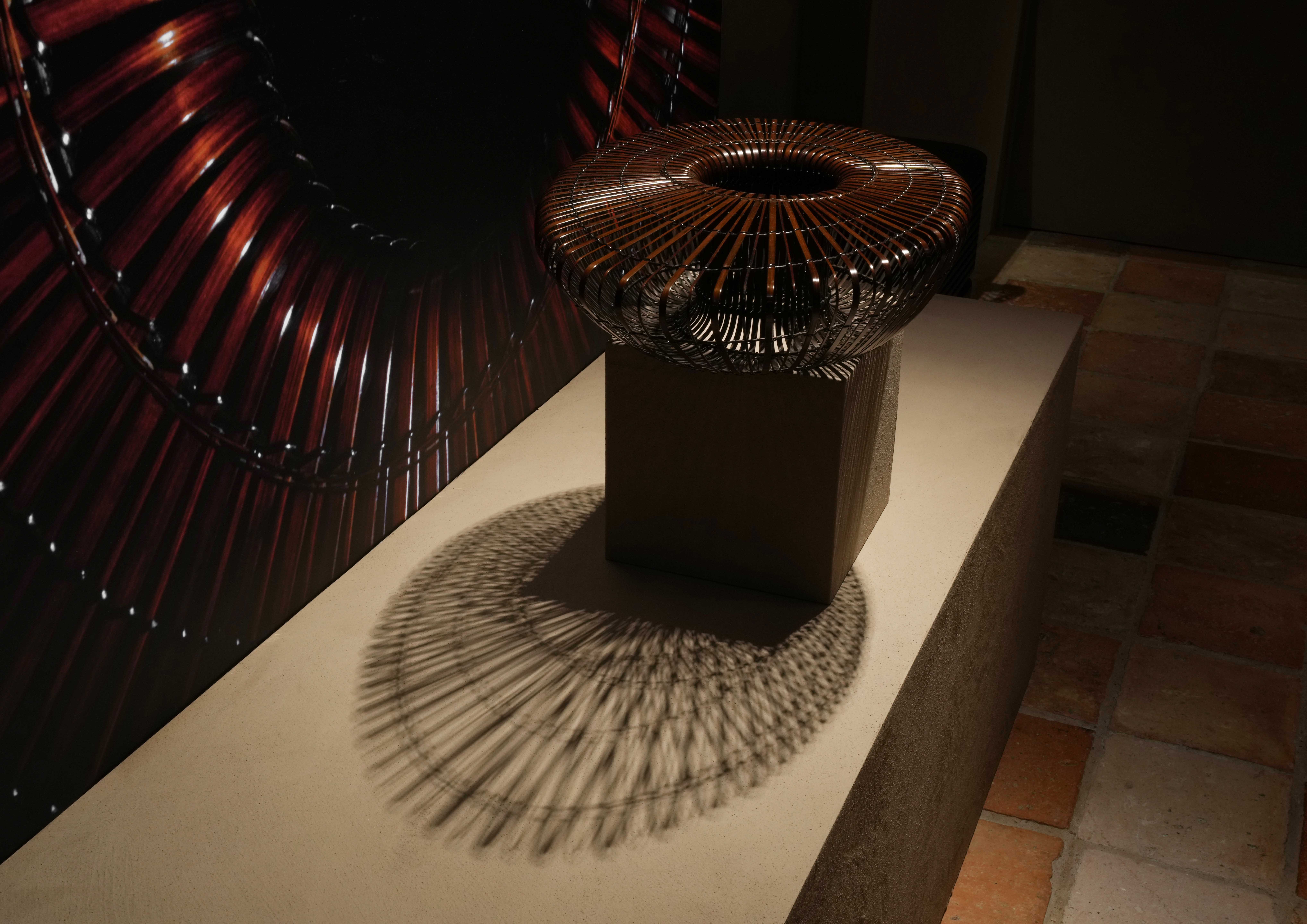TAKE ZAIKU – THE ART OF JAPANESE BAMBOO CRAFT
Exhibition ended – We will inform you here soon about the upcoming exhibition.
“Take Zaiku – The Art of Japanese Bamboo Craft“ is the title of the new exhibition at the IFICAH Museum of Asian Culture in Hollenstedt, inviting visitors to explore the intricate and time-honored tradition of Japanese bamboo craft. The subtitle, “The Art of Japanese Bamboo Craft,” provides a glimpse into the exhibition’s focus on this unique art form. Take Zaiku, meaning „bamboo craft“, refers to the skillful and delicate techniques used to transform bamboo into works of functional beauty, a tradition that has been passed down for centuries and continues to thrive as a symbol of Japanese artistry and innovation.
The term zaiku denotes craftsmanship that combines technical mastery with artistic expression, embodying the Japanese philosophy of dedication and harmony with nature. Bamboo, a material renowned for its strength, flexibility, and sustainability, plays a central role in Japanese culture, appearing in everything from architecture to tea ceremony implements. Over generations, artisans have perfected techniques that honor bamboo’s natural properties, turning it into baskets, containers, and decorative objects of timeless elegance.
The exhibition not only showcases the breathtaking results of this craft but also delves into the profound connection between material and maker. Each object reflects the artisan’s discipline, concentration, and commitment to perfection—a process that aligns with the concept of “dō”, the path to mastery. Visitors will have the opportunity to learn about traditional methods, tools, and the cultural significance of bamboo in Japanese daily life and spiritual practices.
As with all exhibitions at IFICAH, the challenge was to meet conservation requirements while providing a captivating and educational experience. Bamboo, while resilient, is sensitive to environmental factors, requiring careful attention in its presentation. The exhibition creates a space where visitors can appreciate the natural beauty of the material as well as the artistry and philosophy behind this ancient craft.


